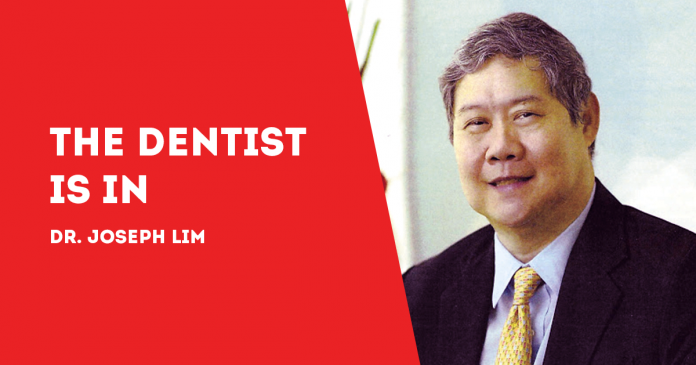
(By Dr. Joseph D. Lim and Dr. Kenneth Lester Lim, BS-MMG, DDM, MSc-OI)
NANODIAMONDS may be the future in dentistry.
To give you an idea of what a nano looks like, a nanometer is about a billionth of a meter; a single atom is about 0.1 nanometer in size.
Intricate bacterial and fungal communities are typically found on the surface of teeth as a biofilm that causes tooth decay and gum diseases.
Up to 80 percent of all human infections are formed by biofilms, according to the U.S. National Institutes of Health.
Researchers at the University of Hong Kong’s Faculty of Engineering and the Faculty of Dentistry are working on high-pressure high-temperature nanodiamonds to combat oral infections.
Dr. Chu Zhiqin, Assistant Professor of the Department of Electrical and Electronic Engineering, and Dr. Prasanna Neelakantan, Clinical Assistant Professor in Endodontics, are pioneering the research on nanodiamonds.
Nanodiamonds are effective against free-floating and attached (biofilm) bacteria and fungi, they reveal for the first time in an article published in Biomaterials Science.
They say that nanodiamonds prevent the formation of biofilms.
Dental caries or tooth decay is one of the most common diseases and affects more than 3 billion people, nearly half or 48 percent of the global population.
Tooth decay starts when bacteria that produces acids form biofilms on the surface of the teeth. Streptococcus mutans (S. mutans), a Gram-positive bacterium, is one cause of tooth decay.
Periodontal or gum disease is the sixth most common disease affecting one in 10 or 11.2 people worldwide. One cause is Porphyromonas gingivalis (P. gingivalis), a Gram-negative bacterium.
These bacteria are highly resistant to conventional antibiotics. This is why nanotechnology provides a promising alternative.
No developments have been observed in the treatment of fungal infections; again, nanotechnology may be an alternative answer.
“Nano-materials are the hot topic in current materials science as these ultra-small particles can effectively penetrate into microorganisms and can also be used to carry a wide variety of drugs,” write Dr. Chu and Dr. Neelakantan.
“Our research showed that these ultra-small nanodiamonds can manipulate genetic mechanisms in the pathogens and prevent their attachment to any surface, hence inhibiting biofilm formation in the oral cavity.
“The results of this exciting study demonstrated the great potential of nanodiamonds as an alternative therapeutic platform to prevent and treat oral infections.”
Nanodiamonds possess many promising features including excellent compatibility and flexible surface properties, the researchers write.
“They are also proven to be very safe for humans. Our work will promote a better understanding of nanodiamonds on oral pathogens, paving the way for their clinical applications.”
Nanodiamonds may also be used to prevent fungal infections that are common among the elderly and the youth, and those who are immunocompromised due to diseases such as HIV infections and diabetes as well as cancer patients undergoing chemotherapy.
Fungal cells are very similar to human cells, and developing antifungal agents that are not harmful to humans has always been a major challenge, according to a press statement from The University of Hong Kong.
***
Dr. Joseph D. Lim is the former Associate Dean of the College of Dentistry, University of the East; former Dean, College of Dentistry, National University; Past President and Honorary Fellow of the Asian Oral Implant Academy; Honorary Fellow of the Japan College of Oral Implantologists; and Honorary Life Member of the Thai Association of Dental Implantology. For questions on dental health, e-mail jdlim2008@gmail.com or text 0917-8591515./PN

